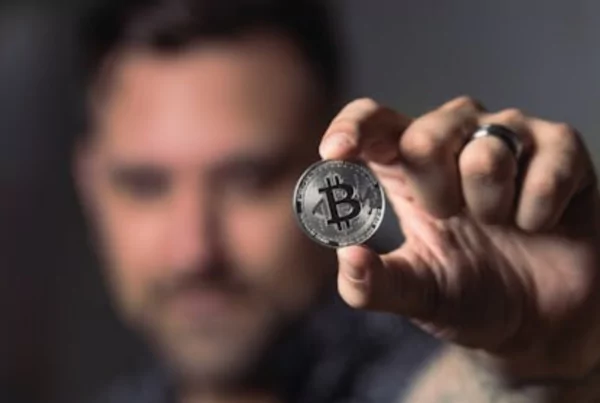
Despite an incredible amount of publicity and being one of the most quintessential upgrades in the history of crypto, the Ethereum Merge is still poorly understood among the general crypto crowd. Many believe that The Merge – a blockchain upgrade that will see Ethereum transition to being an exclusively Proof-of-Stake (PoS) network – will bring forth better scalability, reduce fees, and enhance the Ethereum network in various other ways. The truth is, The Merge won’t do any of these things, at least not initially. Instead, The Merge will lay the groundwork for future Ethereum upgrades that will drastically improve scalability, transaction speeds, and transaction costs.
Before diving further into popular myths surrounding the highly anticipated upgrade, let’s first explain what The Merge is and when we can expect it.
What is the Ethereum Merge?
The Merge is the name of a network upgrade that will see the Ethereum Proof-of-Work (PoW) mainnet merge (hence the name) with the PoS-powered Beacon Chain, a blockchain launched in late 2020 as a stepping stone supporting the mainnet PoS transition. If you want to learn more about The Merge, please check the following video published by the DeFi-focused YouTube channel Finematics.
Once The Merge is fully integrated, Ethereum will cease to rely on a network of miners for network security, transaction validation, and new block production. Instead, the general upkeep of the network will be managed by Ethereum validators who will stake their ETH holdings in exchange for staking rewards.
While the change of the mainnet’s underlying consensus algorithm is a very big deal, that change won’t have much impact on regular users, who might be using the Ethereum network to tap into various decentralized finance (DeFi) products and services, trade non-fungible tokens (NFTs), or engage in a variety of other on-chain activities supported by Ethereum.
When will the Ethereum Merge take place?
The exact date of The Merge is hard to pinpoint due to the varying difficulty of mining new blocks. The Ethereum foundation posted the terminal total difficulty that will trigger The Merge, expected to occur later this month, between September 10-20.
It is worth noting that prominent Ethereum developer Time Beiko recently highlighted September 15 as the most likely Merge date.
Top 5 Ethereum Merge myths
With the brief introduction of The Merge out of the way, let’s proceed to the top five myths surrounding Ethereum’s upcoming network upgrade.
1. It’ll reduce gas fees
While network congestion leading to high transaction costs is one of the most pressing issues facing Ethereum, The Merge won’t help alleviate this problem. The gas fee, a cost for using the Ethereum network, will stay the same after the September upgrade. The first major improvement in the network’s throughput will go online during The Surge, the next upgrade phase in Ethereum’s development cycle.
2. It’ll increase transaction speed
Similar to the first misconception on our list, transaction speeds won’t be affected (at least not in any meaningful way) by the change in the platform’s underlying consensus mechanism. Both gas fees and transaction speeds are a product of blockchain’s scalability, which The Merge won’t address directly. However, it is worth noting that after the upgrade, a new Ethereum block will be produced every 12 seconds, down from the current speed of 13.3 seconds, resulting in slightly faster transaction speeds.
3. It’ll make the network less secure
A common jab against The Merge is that it will decrease the platform’s overall security. If anything, the Ethereum network will likely be more resistant to malicious attacks post-Merge. Case in point, after The Merge, Ethereum will, for all intents and purposes, no longer be susceptible to 51% attacks. Anyone wanting to seize control of the Ethereum network and introduce protocol changes would have to control 51% of all ETH in circulation (currently valued at ~$97 billion).
4. Staked ETH will be accessible immediately after The Merge
The fourth myth on our list stems from the fact that many people equate Ethereum 2.0 and The Merge. Initially, Ethereum 2.0 was used as the name for the Ethereum network after the Proof-of-Stake transition. Later, the Ethereum Foundation decided that The Merge would be used for the PoW to PoS transition instead, and Ethereum 2.0 would come to represent a fully upgraded Ethereum, with sharding, Verkle tress, and so on. However, since many people seeThe Merge and Ethereum 2.0 as the same thing, they think that deposited ETH would be unlocked with the Merge upgrade.
That’s not the case. Investors depositing their ETH in the Eth2 smart contract, or via liquidity pools, such as LidoDAO, won’t’ be able to withdraw their ETH for at least a couple of years – more exactly, until the Shangai upgrade (the next major upgrade after The Merge) rolls out.
5. It’ll lead to a miner rebellion
Pehaps the most contentious and final myth on our list is rooted in the fact that the existing mining infrastructure will become obsolete after The Merge goes live. While it is easy to see why ETH miners would have a clear economic incentive to keep the network tethered to Proof-of-Work machinery, they have little leverage in making this happen.
If, for the sake of the argument, a group of miners would successfully pull off a hard fork of the existing PoW chain, the new network would have difficulty attracting users due to the lack of popular decentralized applications (dApps). Last but not least, the move to PoS was planned from the beginning, which means that ETH miners had known that mining operations would become obsolete sooner or later.
Wrapping up
The Merge represents the first out of the five planned Ethereum upgrade phases that will see Ethereum become a network capable of processing up to 100,000 transactions per second (TPS). The next phase, called The Surge, will introduce sharding and tackle the network’s scalability. In the meantime, Laye 2 solutions like Polygon and Optimism, remain the only viable options to increase the speed and lower the cost of Ethereum transactions. Hopefully, this article managed to clear up the most common misconceptions about the Ethereum Merge.



